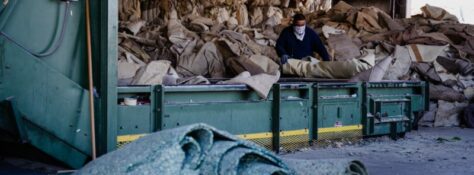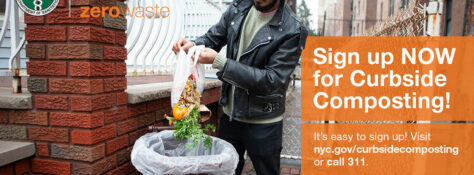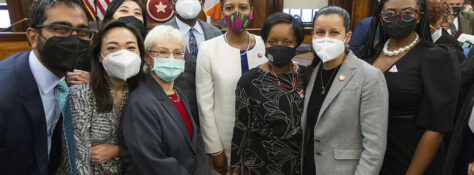News
Last week, the New York League of Conservation Voters and partner organizations joined Sen. Pete Harckham in Albany as he announced the introduction of the Packing Reduction and Recycling Infrastructure Act.
Learn MoreNews
As New York State and New York City continue to be national examples for environmental legislation designed to reduce carbon pollution, the New York League of Conservation Voters is advocating strongly for implementation of four waste reduction measures at various stages. The League is urging Gov. Kathy Hochul to sign two bills already passed by the state legislature: the Digital Fair Repair Act and a bill that would require carpet producers to establish a recycling program.
Learn MoreNearly one third of the waste New Yorkers produce is organic material. When this material ends up in landfills, it releases methane, a greenhouse gas 30 times more potent than carbon dioxide. Through an organized composting process, this food waste would be collected, broken down, and recycled into fertilizer for plants and farms. According to an estimate from the New York State Department of Environmental Conservation, eliminating food waste across the state would remove 120,000 metric tons of carbon dioxide equivalents from the atmosphere per year. That’s the equivalent of taking over 25,000 cars off the road.
Learn MoreIn the last week, the City Council Committees on Sanitation and Transportation held hearings on clean streets and expanding vital sanitation services, and transportation equity respectively. The Sanitation Committee’s hearing covered key issues facing the New York region including eco-friendly waste management systems and composting programs, while the Transportation Committee’s forum addressed transportation infrastructure and traffic enforcement initiatives. At both of these hearings, NYLCV New York City Program Associate Carlos Castell Croke testified in support of expanding the city’s composting program as well as making transportation more equitable.
Learn MoreWhen it comes to combating climate change, we’ve been taught to prioritize the three R’s: reduce, reuse, and recycle. But figuring out the best way to do this can be confusing and difficult to navigate when the burden is placed on individuals. Extended producer responsibility (EPR), most recently proposed in Governor Hochul’s upcoming budget, seeks to take that pressure off of individuals and put it back on the producers of the goods we consume.
Learn MoreNew York City residents produce nearly 13,000 tons of waste every single day. 81% of this waste ends up in landfills and incinerators throughout the Northeast region. As the garbage decomposes, it releases methane, a greenhouse gas 30 times more potent than carbon dioxide. The diesel trucks that transport this waste carry it a distance equivalent to driving more than 312 times around the Earth. To combat these impacts, New York City has been working toward achieving their Zero Waste goal of eliminating all waste sent to landfills by 2030. This goal requires the reduction in volume of disposed goods, as well as the recovery and reuse of their materials.
Learn MoreLate last week City Council Speaker Adrienne Adams announced her appointees for committee chairs. The most important chairs to keep an eye on for sustainability, and building a greener city, are those for environmental protection, transportation, parks, sanitation, and resiliency. Housing, health, and finance are also important chairs that can help facilitate environmental legislation.
Learn MoreAs New York City begins strategizing for the new year, our new administration and Council Members have the opportunity to start making transformative investments in our environmental infrastructure and resiliency. NYLCV’s newest Policy Agenda lists what issues should be made top priority in the transportation, energy, public health, conservation, and environmental justice sectors, and highlights the legislative opportunities that will get us there. We hope to build upon our progress made last year and continue making bold policy decisions for the good of our community. Below are some of the main points made in this year’s Policy Agenda.
Learn More





